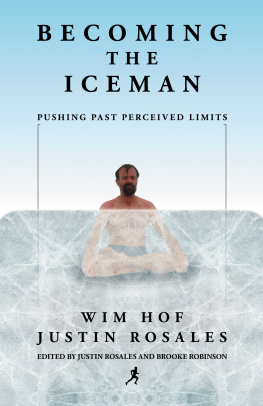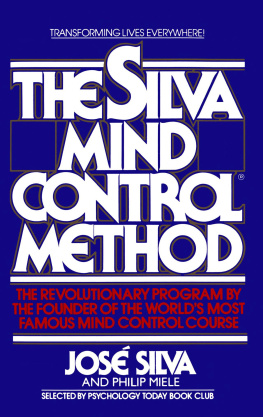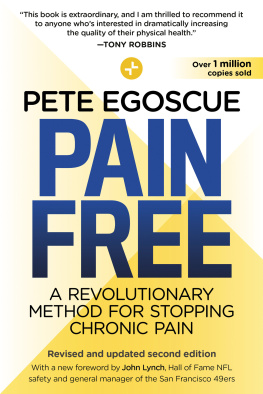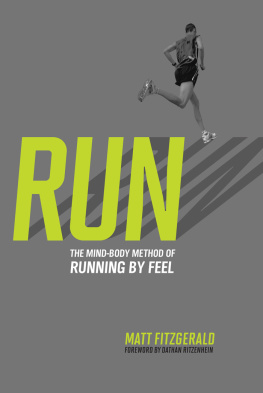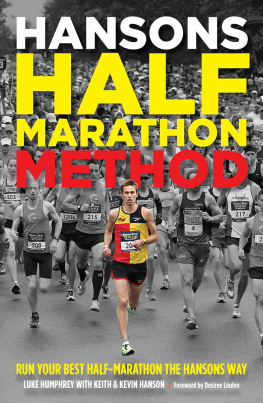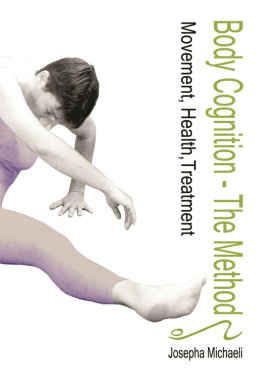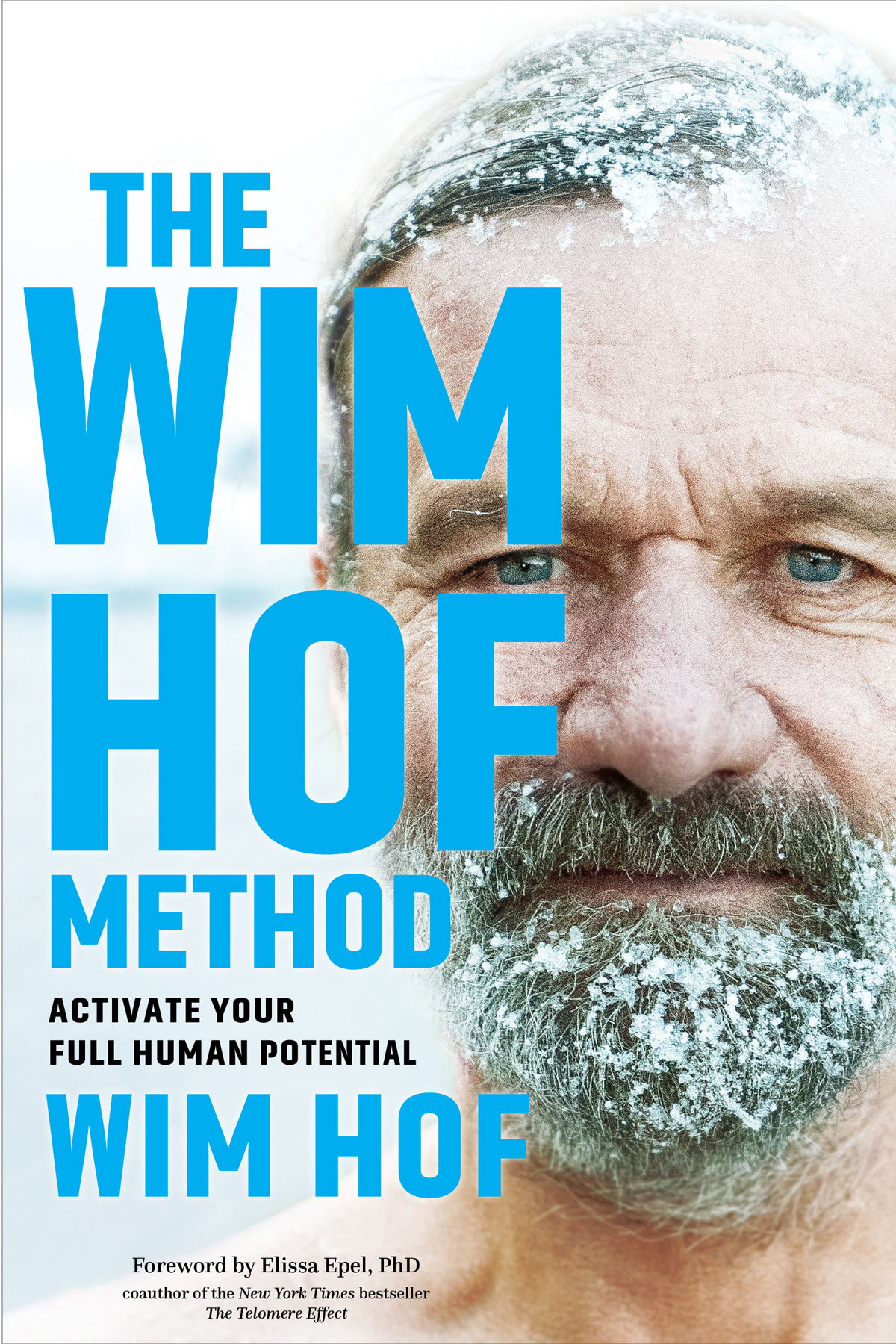Contents
Guide
Page List
I dedicate this book to my children, your children,
your mothers and fathers, brothers and sisters.
But most of all, I dedicate it to YOU.
The YOU that resides beyond fear,
The YOU who is willing to dive deep.
My hope is for you to regain your personal power, help others,
and ultimately lend your hand to Mother Nature herself.
What lies behind us, and what lies before us are
but tiny matters compared to what lies within us.
And when we bring what lies within us
out into the world, miracles happen.
HENRY STANLEY HASKINS
CONTENTS
FOREWORD
AN UNLIKELY MEETING
BY ELISSA EPEL, PHD
I t was an unlikely place for a somewhat conservative medical school researcher to be: a business-oriented wellness conference in Palm Beach, Florida. I wondered if I should have come, and I reminded myself to be open that you never know what the world has in store for you, who you might meet, what you might learn. And then, my reason for being there was unveiled. There he was, walking up to the podium, wearing a T-shirt when most were in suits, a beard that implied I have better things to do than spend time on a manicured trim. Wim Hof told us part of his story. He led us through the breathing part of his method. And I was absolutely struck.
What he described of his experience was exactly what I had been searching for ways to increase hormetic stress in our bodies. Theoretically, a stressful exposure can have harmful effects at high doses, but at low doses it can actually create changes in our body that make us healthier and stronger thats what we call hormetic stress. Stress researchers like me spend a lot of time exploring the dark side of stress, how chronic stress and depression wear us down, shorten our telomeres, and contribute to disease. But we also know that stress can be a good thing. Acute short-term stress can lead to powerful positive changes in our cells. Heating up a worm just a bit, for example, can increase the life of that worm, although too much heat and it becomes a funeral. Studies on hormetic stress in humans are scarce, leaving many questions unanswered. Are there natural ways to safely unlock the positive effects of stress in our cells? Do we already hold the keys to our own well-being? Where do we start the search for those answers? It seemed to me, hearing him speak, that Wim Hof had created a good map for us to explore.
After the talk, a couple approached me, Victor and Lynne Brick. Victor, having tragically lost his brother to mental illness, was looking for ways to support research on natural methods to prevent or even cure depression and other serious mental health issues. (Despite the many antidepressant medication ads on TV, several meta-analyses suggest Big Pharma solutions do not have benefits beyond the placebo effect.) From that meeting, a study was born.
When I returned to University of California, San Francisco, and told my colleagues about Wim Hof and his method, I didnt exactly jump to, Can we study the Iceman? Thats the first thing you might have learned about him: his nickname. In the many documentaries about Wim, you see people practicing the method in small circles with him. You can feel their adrenaline and group cohesiveness, fueled by exercising the limits of their bodys regulation, exposing themselves in shorts to the ice maybe during a cold Poland winter while heating up their bodies with their mindset and breathing method. You see people doing push-ups while holding their breath, more push-ups than they thought they could do. You see young people flocking to him, especially men, high-performance machismo in the air. You hear accounts of miraculous cures from people with disease who practice the method. All these are red flags for conscientious medical school researchers. But the potential of unleashing novel potent hormetic stress effects overrode the alarm of extraordinary claims, the skeptical reaction to his growing popularity. My colleagues saw the potential, just like I did. To our delight, Wim Hof was 100% supportive of our rigorously controlled trial.
With the fame that comes with breaking twenty-six world records, and the documentaries and popular books that feature him, Wim knows the limits of anecdote, of story, to giving a method validity in the medical world. He knows that the research path slow, painstaking, and with the necessary attitude of objectivity and skepticism is the only path to understanding and applying this method to health care. Research can help us unveil the methods mechanisms, document safety and efficacy, and determine in controlled clinical trials how it affects people with disease states. The method has been tested in small pilot studies so far, showing improvement of the immune system response to endotoxin It is being tested in people with spinal cord injuries who cannot easily activate their autonomic and cardiovascular systems with exercise. It is being practiced among the elderly, with some members of the Wim Hof Method practice group over ninety years old. Wim knows that rigorous research is the path that will lead to discoveries that give more people control over their health and well-being.
I have been following the emerging peer-reviewed research on the Wim Hof Method closely. My conclusion is that we need more serious examination of this method, as it has unique potential for improving health and slowing the aging process. In our study at the University of California Department of Psychiatry, we have spent the last year teaching people with high levels of life stress the Wim Hof Method and closely examining how it impacts their daily emotional reactivity, autonomic stress reactivity, and cellular indicators of aging. We dont mention his name or label the method, because that would invoke what we call a guru effect a strong belief about the method that we could not match in the other conditions we are studying (exercise, meditation). The trial is expected to be completed this year.
This is the beginning of a new field. We already know some specific things about the method, such as how the breathing method can temporarily change the pH of our blood. The method has inspired many theories of how it works. But what we think the mechanisms are today may change over time with more research. I am so excited to learn more, for the benefit of us all, and for the much-needed shift of health care toward self-care.
The truly remarkable story here is Wims own, as revealed in these pages. It is not a search for fame that drove Wim to accomplish feats such as swimming more than 100 feet under the ice of a frozen lake or hiking with a group to the top of Mount Kilimanjaro in twenty-eight hours. But these feats speak volumes. They show the method can push us past our assumed limits, that we can unlock the vast potential of our bodies and minds. The true story is of one mans passion, his love for nature, for all living beings, for his family, for humanity, and thus his drive to share what he now knows to hopefully heal sickness. (As a boy, he felt deeply connected to nature, so much so that he stopped eating animals at thirteen years old, completely on his own, in a culture of omnivores.) Its also a story of human suffering and striving the humanizing experiences and insatiable curiosity that drove Wim to explore the limits of mind and body.
The true story is that Wim has shown us what we all can do. The underlying method requires something uniquely human the power of belief in ourselves, the power of strong intention combined with directed attention. The unique dialectical state of relaxing into physical discomfort and pain of ice, of cold water, of breath-holding I find this to be a remarkable state. As someone who loves meditation, I believe it is an especially interesting state from which to observe the mind. It is different from sitting meditation alone it has sharp, acute effects, demanding our full attention and interoception. Training the mind and body in this way seems to have great potential for developing stress resiliency.


